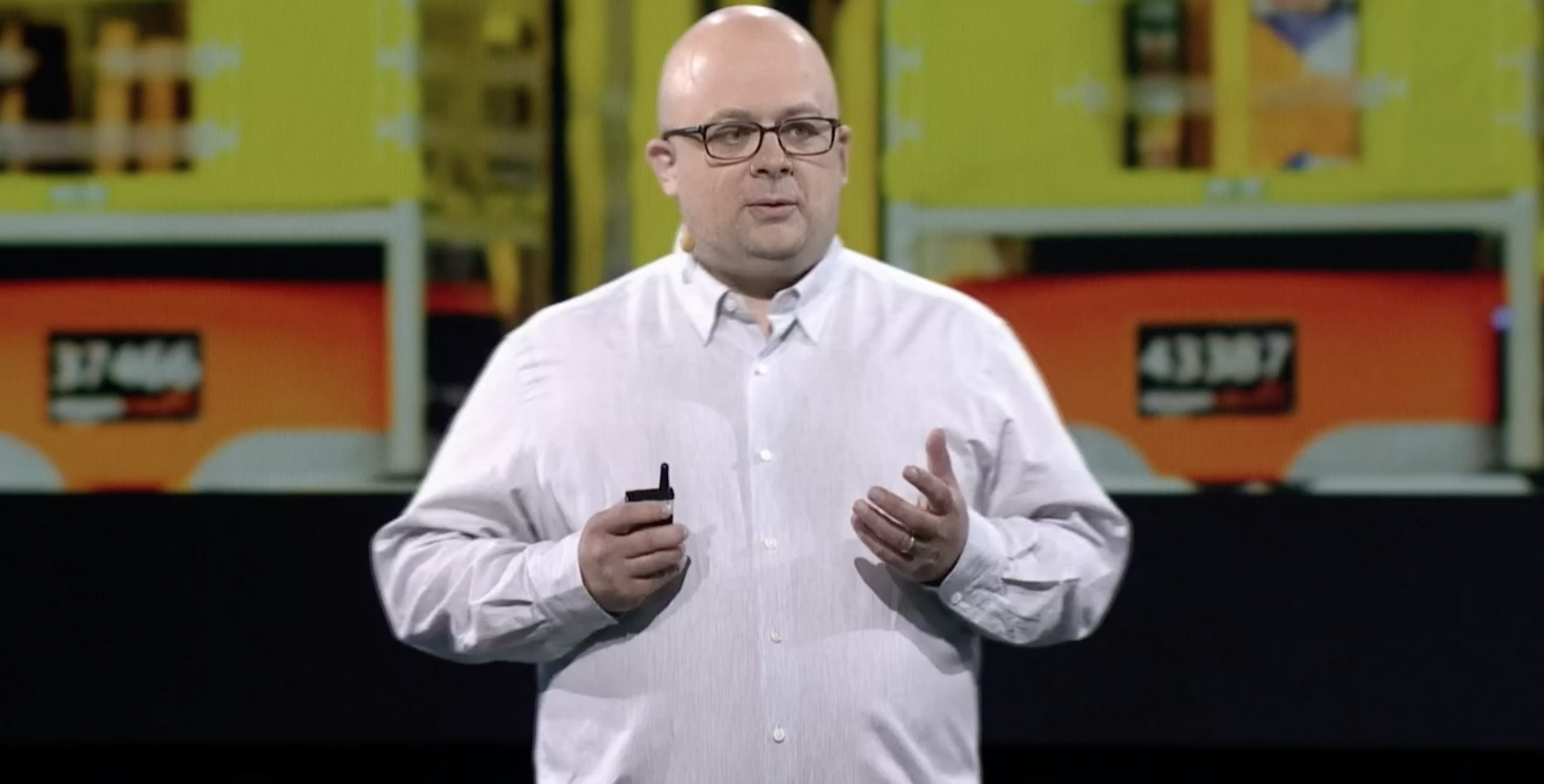Brad Porter boasts an impressively long and successful career, but he’s still actively learning and refining his approach to raising capital.
Brad’s 30-year career highlights include deploying over 500,000 robots as the Vice President and Distinguished Engineer of Robotics at Amazon, as well as accelerating robotics as CTO of Scale AI.
Now, as the head of Collaborative Robotics, Brad and his co-founders Jane Mooney (formerly of Amazon) and Steph Tryphonas (formerly of Tellme and Microsoft) are pioneering the future of robotics in fields ranging from manufacturing to healthcare to domestic spaces.
As Brad explains, “When I started Collaborative Robotics, I was kind of looking around saying, is there anything that solves this more simply than humanoid? and didn't see anything.”
There had to be a more accessible robotics solution.
That’s when the Collaborative Robotics team developed their “cobots” by using holonomic motion. “[The cobot] can move in any direction,” Brad explains. “It can load and unload boxes, totes and carts from shelving space or grabbing existing carts and move them around.” Thanks to robust language models as well as navigation planning, autonomy and sensing, users can even talk to the cobot. You could say, for example “take this tote down to reception,” and the cobot will follow your instructions.
These robots are “collaborative and able to work in and around humans, but they don’t have a humanoid form factor,” explains Brad. These are the robots of the near future.
On an episode of the How I Raised It podcast, Brad talks about his journey so far with Collaborative Robotics. He outlines the importance of networking, shares the book that got him through the seed round and explains why, ultimately, you have to stay nimble to stay viable.
How To Raise It Like Brad
1. Leverage your network
For Brad, nurturing relationships is paramount. Thanks to his decades in the industry, he already had a deep bench of supporters by the time he established Collaborative Robotics. When it came time to secure seed money for his new venture, Brad started by reaching out to his network; he was able to procure more than $2 million in this “friends and family pre-seed round.” Brad notes that in this earliest stage, people were really investing in him more than the technology — he didn’t even put together a pitch deck!
2. Stick to the playbook
Brad credits Bolt founder and CEO Ryan Breslow’s book Fundraising with guiding him through the seed money round.
“It is pure gold,” says Brad. “Every single strategy in there worked perfectly. Everything he described made sense.”
Prior to his experience at Collaborative Robotics Brad hadn’t personally spearheaded a fundraising drive. But, he adhered to Ryan’s strategy, even when it seemed counter-intuitive, and in the end it paid off. In just three weeks he solicited more than $11 million from a collection of motivated VCs and angels, including Ali Partovi of Neo, Khosla Ventures, 1984 Ventures and Calibrate Ventures, to get Collaborative Robotics off of the ground.
Brad notes that Ryan’s advice helped him develop the fine art of “piquing people’s interest without giving up everything.” You want your introduction to be just revealing enough to secure a call or in-person pitch.
3. Don’t be afraid to get commercial
Brad recognizes that he benefited from fortuitous market timing in the seed round. By the time Collaborative Robotics was ready to pursue Series A funding, the environment wasn’t quite as friendly for fundraising.
“This is not the market to be purists,” Brad remembers thinking. “This is the market to get commercial as quickly as possible, and to be able to boot-strap yourself if you need to.”
“I don't think anyone had any real concern as to whether Brad Porter, a distinguished engineer from Amazon with his track record, could build technology. The question was, can Brad Porter sell to enterprises?”
Noting that it’s easiest to raise money when you don’t need to, the Collaborative Robotics team committed to securing at least two marquee customers, including the Mayo Clinic, in an effort to increase cash flow and demonstrate viability.
4. Systematize your outreach strategy
When Brad started pursuing Series A funding, he was keeping track of prospective investors using a Google Sheet. It quickly became apparent that this method was not detail-oriented enough to meet his needs.
So Brad became a Foundersuite customer and began customizing and using individual cards to keep track of potential investors. He recommends breaking down your outreach strategy into their smallest component parts.
“The tool was really helpful for keeping track of the various conversations…it was just a simplifier.”
Ultimately, Brad’s organizational strategy paid off. Collaborative Robotics secured $30 million in Series A financing. Sequoia Capital led the funding round, with previous investors, Jeff Wilke (former CEO of Amazon Consumer) Fuel Capital and MVP Ventures adding to the pool.
5. Be ready to sail when the wind changes
After closing Series A, Brad didn’t anticipate raising a Series B until 2025. He was keeping his lines of communication open with Series B level investors, but, for the most part, he was focused on getting robots built and out in the field in preparation for an investor showcase.
But a couple of things happened that made him revise his plans. First, the buzz around robotics started to pick up; investors concluded that AI was on the precipice of enabling advanced robotics. Plus, Figure AI closed a monster round of fundraising, further drumming up interest in robotics in general.
Brad could feel the winds shifting. He conferred with advisors Emil Michael of Uber and Alfred Lin of Sequoia Capital. “I think maybe I should put my sail up and see if I can raise right now,” Brad remembers saying. Everyone was in agreement: when conditions change, you have to alter your strategy accordingly.
Collaborative Robotics decided to open up their investor showcase to include a select number of potential Series B investors. “We didn’t run a process in Series B, we just followed up with people after that event,” Brad explains.
In just eight weeks Brad ended up raising $100 million led by General Catalyst. Existing investors Sequoia Capital, Khosla Ventures, Mayo Clinic, Neo, 1984 Ventures, MVP Ventures and Calibrate Ventures also participated, along with Bison Ventures, Industry Ventures and Lux Capital.
6. The process is difficult — own it
If drumming up capital and keeping a startup afloat sometimes feels like you’re running a gauntlet, Brad says that there's a good reason for that — it’s because you are.
“The process is almost set up to test your conviction in your idea,” Brad explains. Ultimately, the best thing that a founder can do is to accept this reality, and run head-first into the fray. “The more you think it’s not hard, the more it will beat you up,” Brad warns.
The key to success is to have enough confidence in your idea to keep going in the face of adversity, and enough humility to reflect and refine your pitch when you hear “no.”
At the end of the day, Brad encourages entrepreneurs to pursue the right investor with dogged determination. “You will get better,” Brad says, “you will get better at selling, pitching and handling rejections, and you will find someone who believes in you and the conviction you have.”
This Article is based on an interview between Nathan Beckord and Brad Porter on an episode of Foundersuite's How I Raised It podcast.


